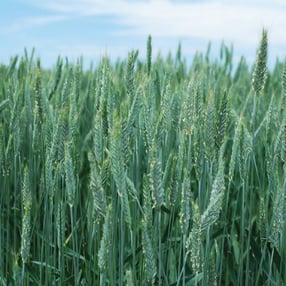 It’s almost time to start planting your cover crop for the colder months of fall and winter. There are many benefits to adding a cover crop into your rotation in any season, but it is particularly beneficial in the fall and winter to put your farm to rest and cover the soil. Some of the benefits of different cover crops include: preventing soil erosion and nutrient depletion, adding organic matter to the soil, adding nitrogen, and preventing weeds from establishing as temperatures warm up. These are important factors to consider when selecting a cover crop that matches your farm’s needs. For mild, wetter climates, it is important to look for cover crops that are tolerant of wet soils. For colder climates, make sure to decide if you want something to winter kill or survive the season. Below are our recommendations of fall-winter cover crop.
It’s almost time to start planting your cover crop for the colder months of fall and winter. There are many benefits to adding a cover crop into your rotation in any season, but it is particularly beneficial in the fall and winter to put your farm to rest and cover the soil. Some of the benefits of different cover crops include: preventing soil erosion and nutrient depletion, adding organic matter to the soil, adding nitrogen, and preventing weeds from establishing as temperatures warm up. These are important factors to consider when selecting a cover crop that matches your farm’s needs. For mild, wetter climates, it is important to look for cover crops that are tolerant of wet soils. For colder climates, make sure to decide if you want something to winter kill or survive the season. Below are our recommendations of fall-winter cover crop.
- Barley: Great for soil retention, biomass, and weed suppression. Will winter kill and needs slightly higher temperatures to germinate
- Clover, White: Strong growth in cool weather, fixes nitrogen, good to mix in with other grains or intercrop with winter vegetable crops
- Clover, Crimson: Can be planted as a mix or alone. Good for under-sowing with fall crops. Plant in late summer to establish, but keep in mind it will winterkill in certain areas.
- Fava “Diana”: Nitrogen fixing, handles wet soil, withstands temperatures as low as 10˚ F
- Oats “Cayuse”: Can be seeded in fall for mild climates (will winter kill) and as a spring cover crop in colder regions. Produces lots of organic matter
- Austrian Winter Pea: Adds nitrogen, suppresses weeds, produces organic matter that is easy to work into the soil in spring
- 4010 Field Peas: Can be planted in spring or fall. Adds nitrogen and is productive with growth. Needs to be planted at a depth of 1.5-3” and does not grow well in overly wet soils
- Merced Rye: Vigorous winter growth for soil cover, suppresses weeds, needs to be incorporated quickly once cut in spring
- Annual Ryegrass: Vigorous and low-growing, prevents erosion, best sown with clover in late summer or early fall to establish before cooler temperatures arrive. Needs soil moisture and shallow depth with good soil contact for germination. Can be seeded with a nurse crop to prevent weed growth while it is established
- Rye Vetch Mix: Great mix of benefits of both rye and vetch, fixes nitrogen, and vetch grows on rye to suppress weeds and protect soil
- Triticale “Bunker”: Cross between wheat and cereal rye, good for erosion control, suppresses winter weeds, tolerant of wet soils
- Vetch, Common: Fixes nitrogen, suppresses weeds, adds organic matter, establishes quickly, cold tolerant, fewer tendrils
- Vetch, Hairy: Can withstand frozen soil if established in fall, likes well-drained soil, fixes nitrogen, adds biomass, best mixed with grains
Generally, these cover crops are seeded in late summer to mid-fall to establish before winter. They can be mowed once they grow taller in the spring and disked in or continually mowed as you move into new ground later in the season. Many of our customers like the Rye-Vetch mix for mild climates because it is a great combination of various needs. Many of these cover crop seeds are available as organic seed. Make sure to research the best cover crops to use if your farm or fields struggle with pest infestations. Some cover crops can provide habitat for pests.